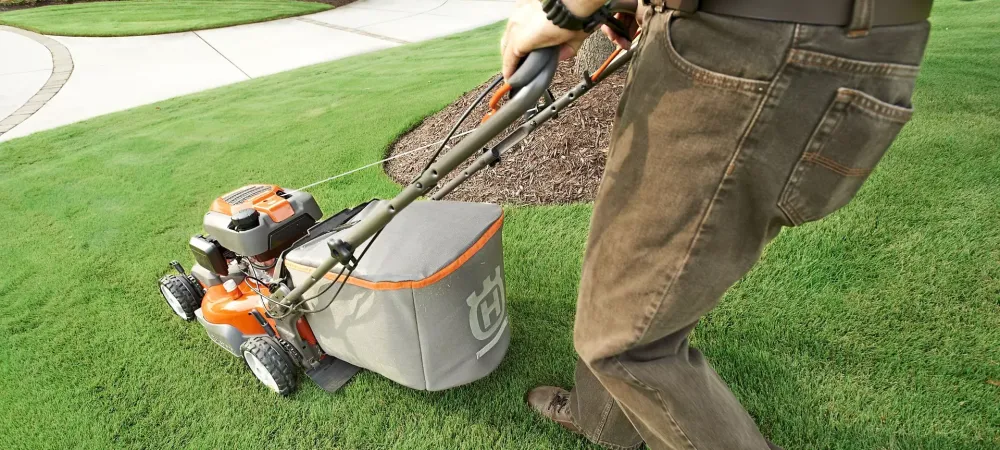Proper Mowing Techniques

How you mow your lawn can make or break the health of your turfgrass, yet, it is often overlooked. The way you mow your lawn helps promote healthy root development controls weeds, and diseases and can be the determining factor between a healthy lawn and one that is dull and lifeless. Let our lawn care professionals walk you through the proper mowing techniques for each type of turfgrass.
What Does Scalping Your Lawn Mean?
Scalping your lawn isn’t the same as mowing it. Scalping takes place when you cut a significant amount off of your grass blades at one time. When mowing your lawn, if you are cutting off more than ⅓ of your grass blade’s height this is referred to as scalping. Doing this to your lawn once a year can help promote the green-up of your lawn. The best time for you to do this is around late April after the final frost of the season has occurred.
When Should I Mow My Lawn?
You want to make sure you are mowing your lawn frequently enough so that you aren’t constantly cutting off more than ⅓ of the height of your grass blade. For most turf grasses this will mean that you are mowing about once a week. However, during the Spring months when grass tends to grow faster you may have to mow every 5 days or so to avoid scalping your lawn each mow.
What Does Scalping Your Lawn Too Often Do?
When you scalp your lawn too often it stunts the root growth of your grass blades. With shallow roots, your turf will be more prone to diseases, weeds, and discoloration. If you do let your turf grass get too long you should gradually reduce the height instead of cutting it all down at one time.
Use Sharp Blades When Mowing
Something often overlooked, the blades of your mower are a determining factor in the health of your lawn. When you mow with dull blades it can shred the ends of your grass allowing turf diseases to more easily take over your lawn. Using a sharp blade will create a clean cut on your lawn and keep it looking healthy and vibrant all year long. With warm-season grasses, you should sharpen your blades about twice a year, and with cool-season grasses, you should sharpen your blades 3-4 times per year.
Mow Your Grass in a Pattern
If you’ve noticed that your lawn seems to be lying flat and looking dull and lifeless this could be due to the direction in which you mow your lawn. If you always mow in the same direction it can lead to thatch and compaction in your grass. Switching up the direction in which you mow your lawn can help your grass blades stand up straighter and look more lively.
Do Not Bag Your Clippings if You Use a Mulching Blade
Finely mulched lawn clippings do not actually lead to an unhealthy yard, it’s actually the opposite. Leaving your lawn clippings behind after mowing helps your grass blades gain the moisture and nutrients that they need in order to grow.
Mow at the Proper Mowing Height for Your Turf
Each turfgrass is unique, which means that each variation grows the best when cut at different lengths. Understanding what type of grass you have in your yard and exactly how to care for it is important to maintaining a healthy, green lawn. Here are the suggested heights at which to mow each variation of turfgrass:
- Tall Fescue 3.0” - 4.0”
- Bermuda 1.0” - 2.5”
- Bluegrass/Rye 1.0” - 2.5”
- Zoysia 0.5” - 2.0”
- Centipede 1.0” - 2.0”
- St. Augustine 1.5” - 3.0”
Safety
Pick up all stones, sticks, and other debris before mowing to avoid damaging the mower or injuring someone with flying objects. Also, never fill a hot mower with gasoline.
Contact Local Professionals to Help
Our lawn care experts at got lawn? are here to help with all of your lawn mowing questions. Give us a call today and talk to one of our knowledgeable lawn care professionals about how to mow your lawn.
